Home Page
![]()
|
Home Page |
CALIFORNIA STATE TELEPHONE CENTRAL OFFICE'S
|
![]()
AREA CODE 909
The 909 area code was a split of the original 714 area code in November 1992. The 909, was split to cover portions of Eastern Los Angeles County and portions of Western Riverside and San Bernardino Counties, covering the cities of Chino, Colton, Fontana, Ontario and San Bernardino. Riverside and Corona (Western Riverside County) were later split off the 909 into area code 951. The 909 is considered the area code for the "Inland Empire", a region that is made up of portions of Riverside and San Bernardino Counties and focus on the "bedroom" communities and cities of the eastern Los Angeles megalopolis. The Inland Empire is one of the fastest growing regions in the State of California as tract homes and strip malls are quickly replacing orange groves and livestock. The Inland Empire was initially made up of huge "Ranchos" where cattle and livestock were raised. Orange and Lemon orchards prevailed in the temperate valleys and low hills. Freeways and affordable housing made the Inland Empire attractive to workers who couldn't afford the high prices in the Los Angeles or Orange County regions, yet were a 30 to 40 minute commute away(without traffic!).
Telephone service in the Inland Empire has mainly been dominated by the independent companies. Independent provided service to the smaller towns and communities where the Bell/AT&T system would not enter due to low traffic and focus on the larger more profitable cities. Early service was provided by California Water and Telephone Company (Moreno, Elsinore, Temecula), Associated Telephone (Chino) and Southwestern Home Telephone Company (Redlands). General Telephone Corporation acquired the assets of California Water and Telephone in 1964 and soon the remaining local independents. General Telephone became GTE of California in the early 1980s and was then purchased by Verizon Corp. in 1996. Pacific Telephone & Telegraph, later Pacific Bell and current AT&T, served pockets of subscribers within the Inland Empire, mostly established cities at the time such as Fontana, Colton, Riverside and Rialto
It is interesting to note, that the 909 area code was the "worst" area code for pulse dialers, due to the required time it took to send the pulses in contrast to other codes such as 213 or 212.
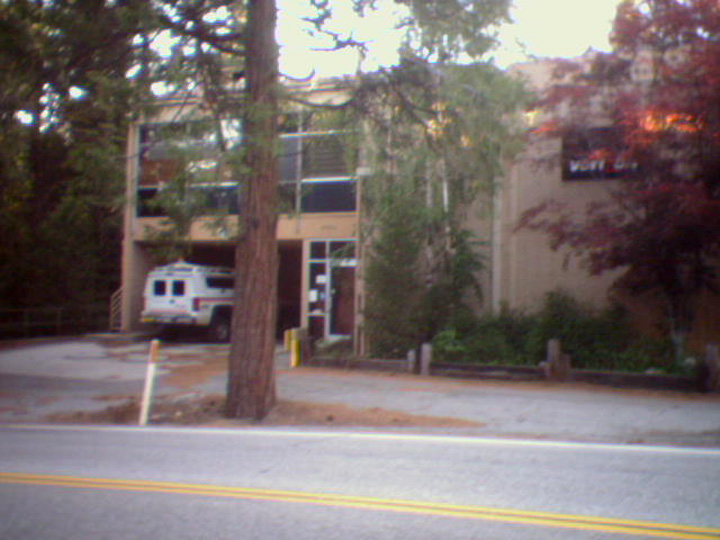 ARROWHEAD (Thanks to Ross for picture) |
Original GTE office, now Verizon Not the best picture, but office is nestled in behind a bunch of pine trees and pretty well hidden from main road. (Plus on a blind curve) Note service garage under the main building characteristic of these mountain offices due to the snow. |
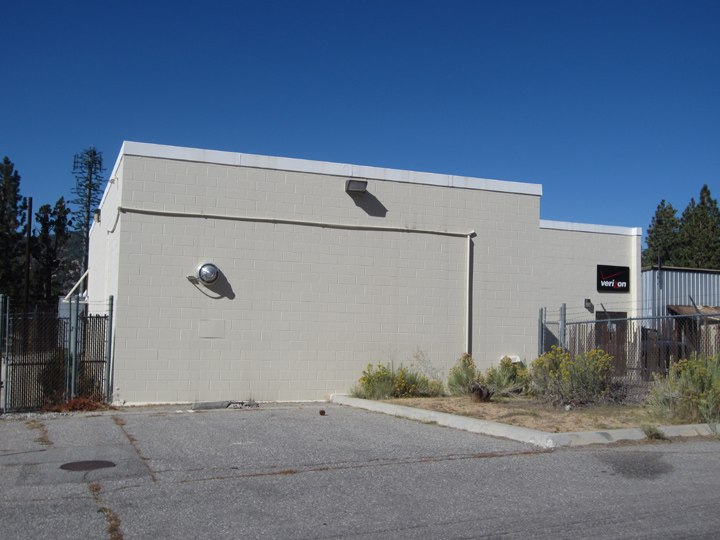 BIG BEAR CITY |
Original GTE now Verizon office Serves the mountain resort community of Big Bear City and Sugarloaf. |
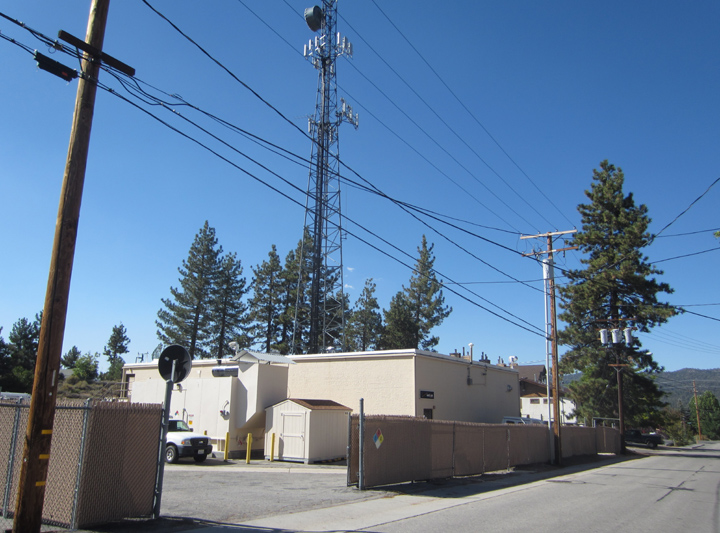 BIG BEAR LAKE |
Original GTE now Verizon California office,
serving the mountain resort of Big Bear Lake and Fawnskin. Old Exchanges: UNiversity 6 |
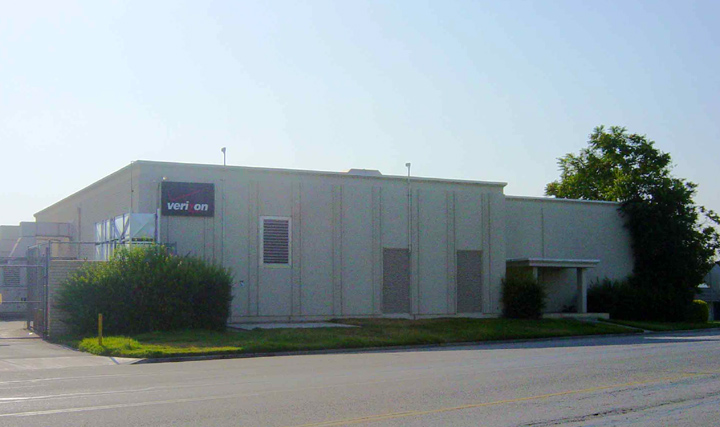 CALIMESA |
Original GTE office, now Verizon California serving Calimesa and parts of the Cherry Valley area. |
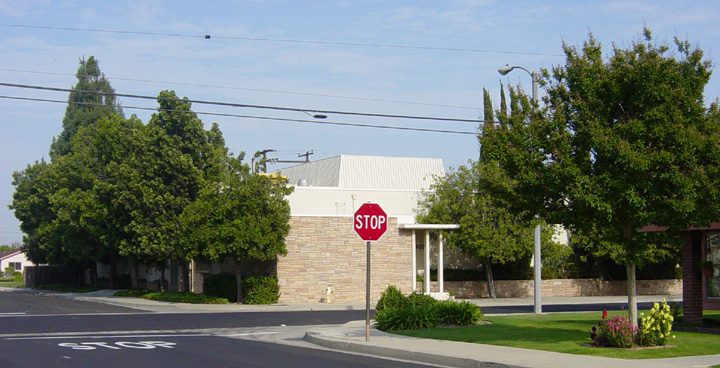 CHINO |
Chino was built in the 1950s by General Telephone and is located in a residential area where the office is well designed and landscaped to fit into the neighborhood with minimal impacts. Became GTE and now Verizon Californina. Old Exchanges: LYcoming 8 and NAtional 8 |
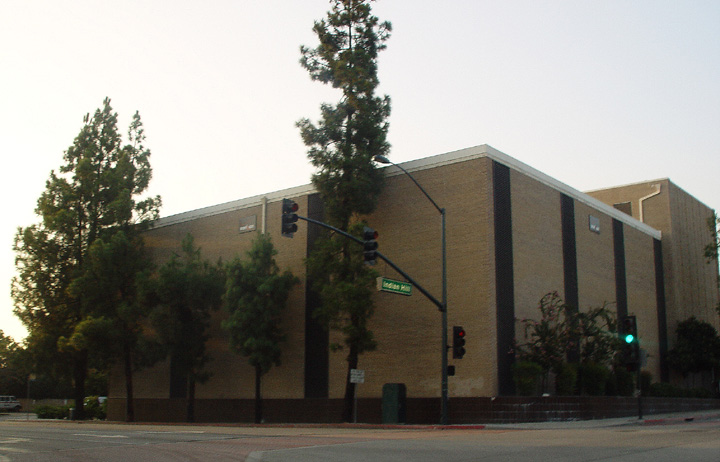 CLAREMONT |
Original Associated Telephone office
built in the 1940's. Became dial in the early 1950's. Became
General Telephone, GTE and now Verizon Californina. Old Exchanges: LYcoming 5, 6 and NAtional 4, 6. |
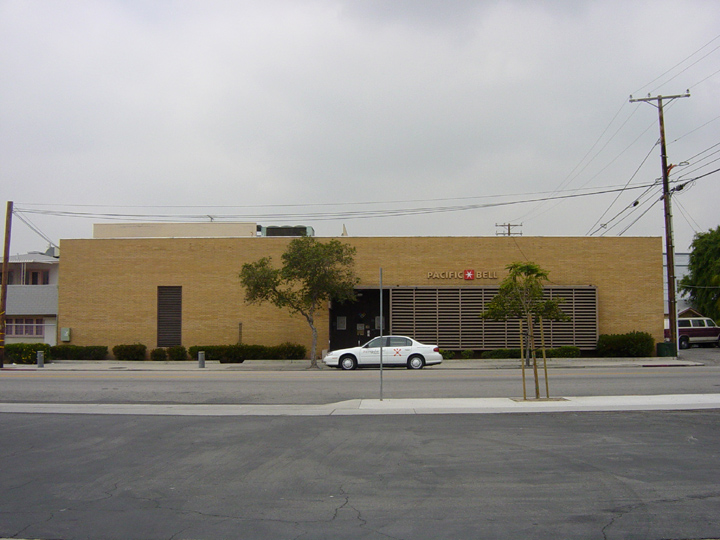 COLTON |
Colton was an Original Pacific
Telephone & Telegraph office built to serve Colton and Grand Terrace. Serves as the host office for numerous remotes in the eastern Mojave desert and Death Valley regions of the state. Old Exchanges: TAlbot 5 |
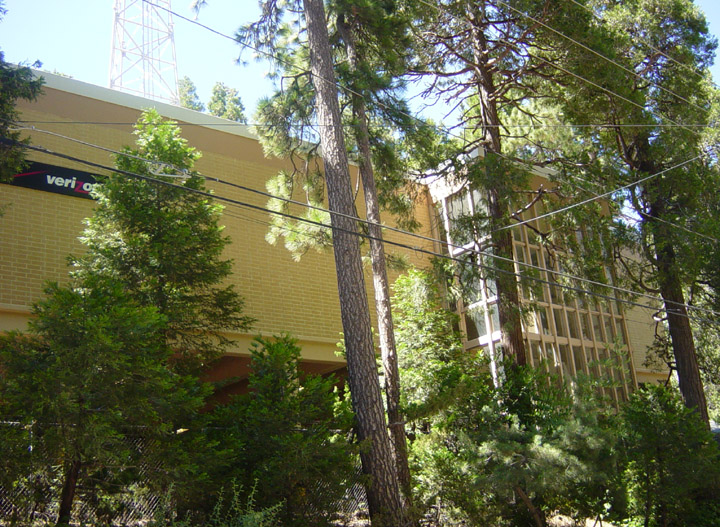 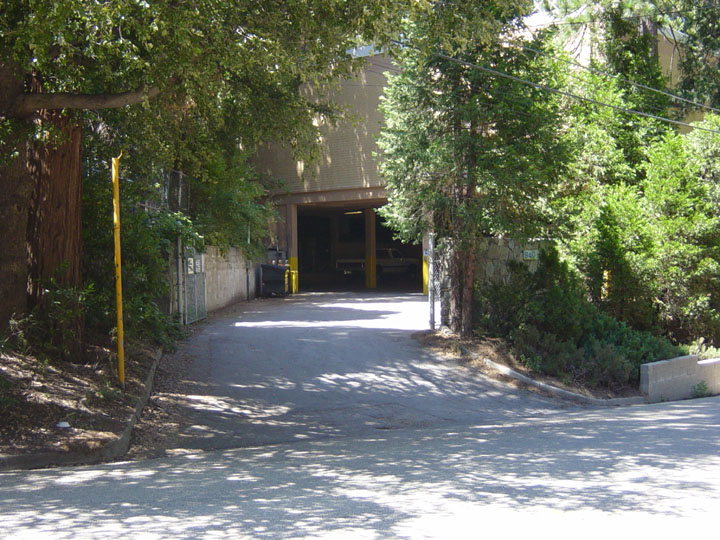 CRESTLINE |
Crestline is one of the larger offices in the area. Built amongst the towering pines, the office has a unique design with a glass enclosed stairwell. Another interesting feature of this office is the underground parking garage in bottom photo for storage of vehicles during the snowy winter months. |
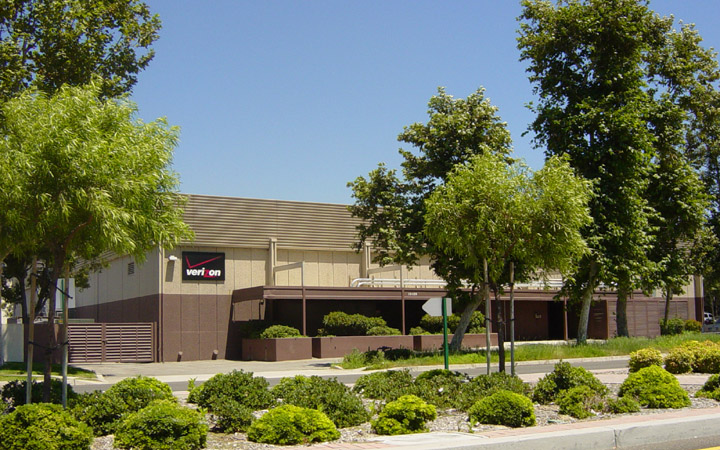 CUCAMONGA |
Original Associated Telephone office. Became General Telephone, GTE and now Verizon Californina. Old Exchanges: YUkon 7 |
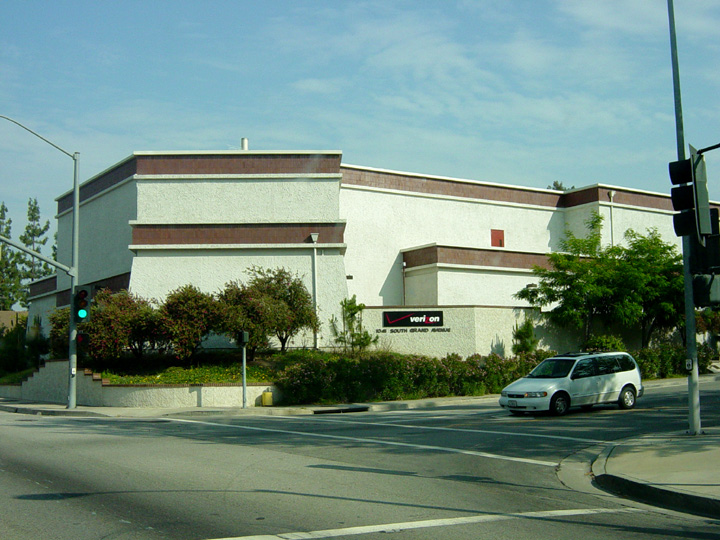 DIAMOND BAR |
Original GTE office built in the 1970's. Became Verizon California. GTD5EAX switch. |
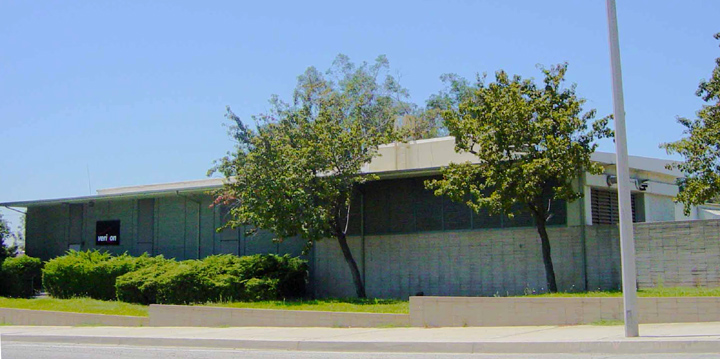 ETIWANDA |
|
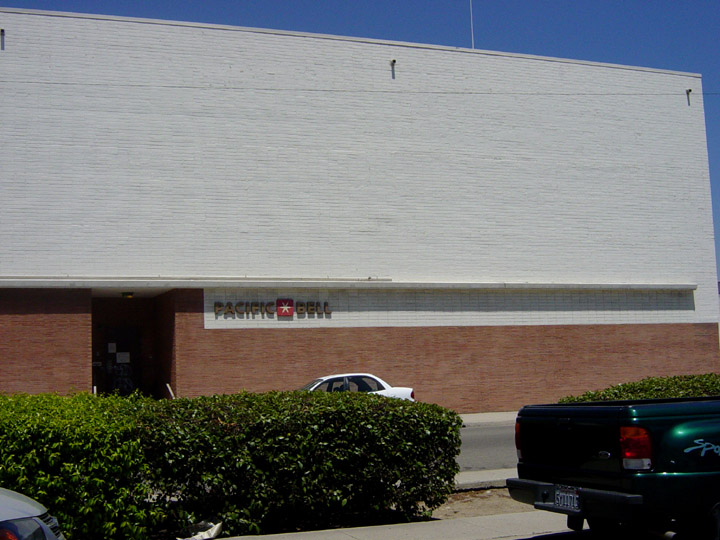 FONTANA |
Analog 1AESS switches were replaced with DMS-100 digital in early 2000. Old Exchanges: VAlley 2 and VAlley 3 |
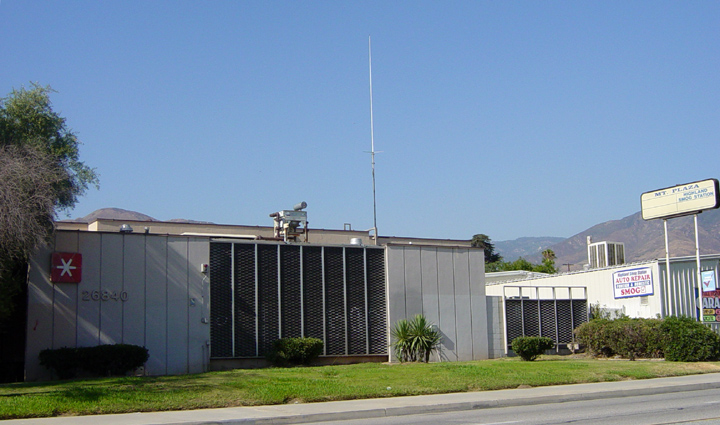 HIGHLAND |
Pacific Telephone became the exception in the 1950's when it provided telephone service to the Highland area at the base of the San Bernardino Mountains. It was the only Pacific Telephone facility in the area at that time, as the remaining area was served by California Water and Telephone Company and later General Telephone. Old Exchanges: GLenview 8 and HEather 8 |
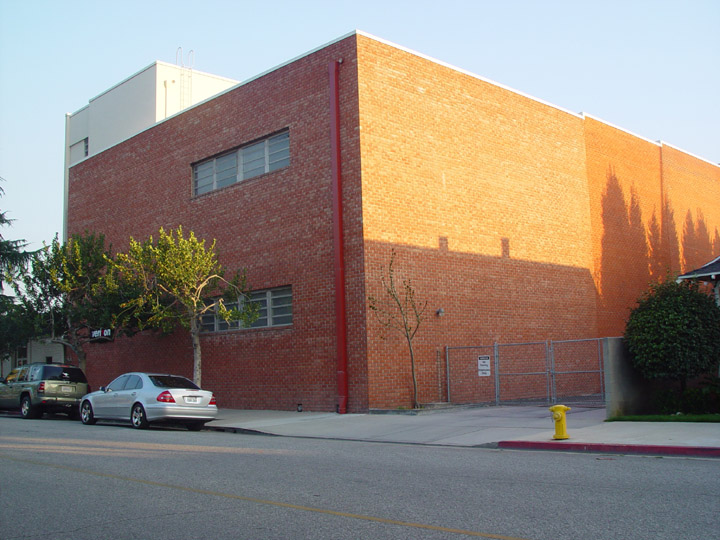 LA VERNE |
Built by Associated Telephone in the early 1940s and became
dial by the early 1950s. Old Exchanges: LYcoming 3 and 4. |
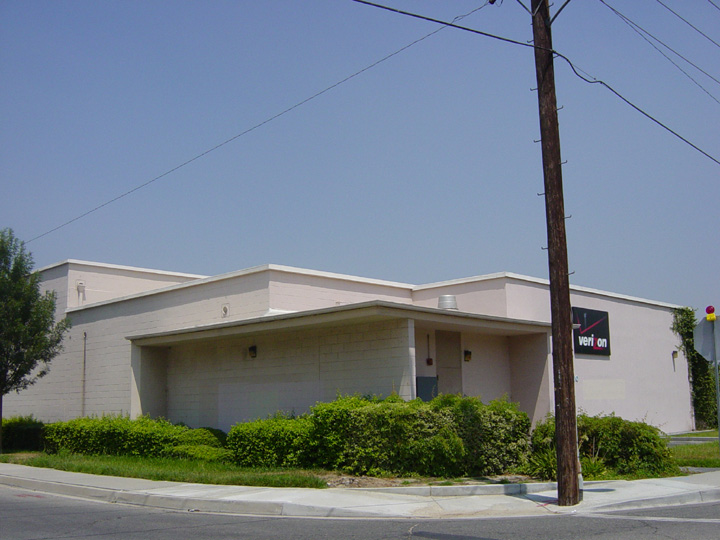 LOMA LINDA |
Old Exchanges: PYramid 6. |
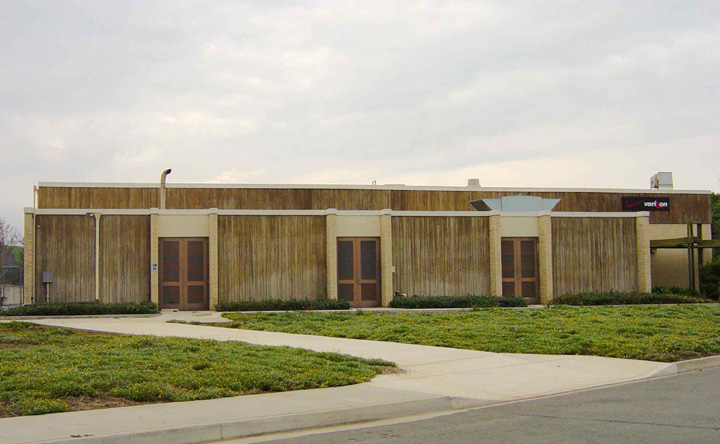 LOS SERRANOS |
Built in the early 1970s by Associated Telephone to serve the growing Chino Hills development. |
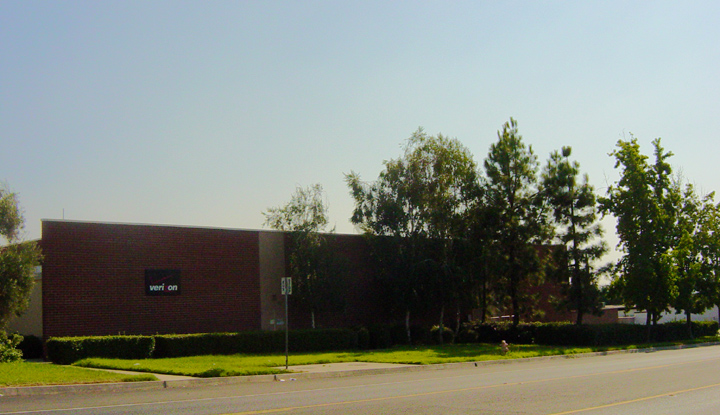 MENTONE |
Old Exchanges: PYramid 4 |
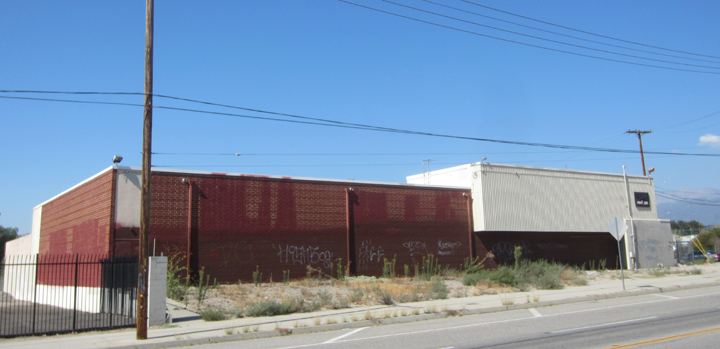 MUSCOY |
Original Associated Telephone office built to serve the areas of Muscoy and Devore and the Marshall Rate Center. Old Exchanges: TUrner 7 |
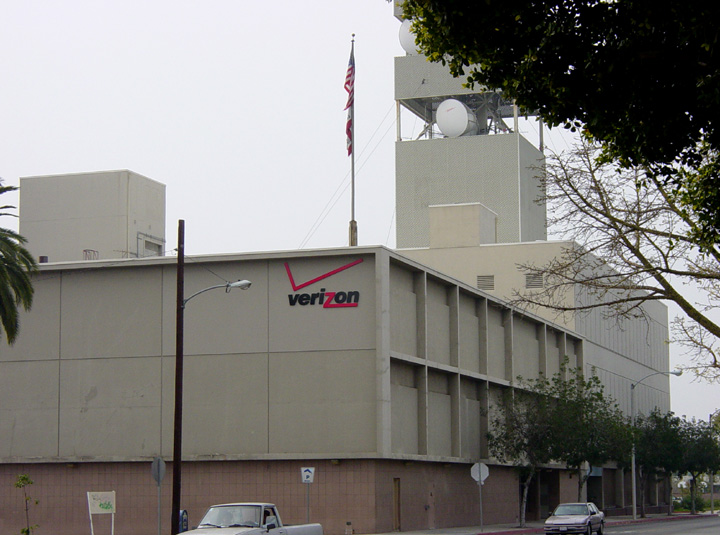 ONTARIO |
Ontario is
the main tandem office for the Verizon offices in both the 909 and 951 area
codes, which encompasses the majority of the Inland Empire, San Bernardino
Valley and south areas including Temecula and Elsinore to the San Diego
County line. Ontario didn't become a tandem office until 1978 when it became a Primary Center or Class 3 office, as part of the AT&T Direct Dialing Hierarchy. Ontario was connected directly to the San Bernardino Class 1 Regional Office and the various foreign sector (GTE Territory) toll offices that had been homed directly to San Bernardino were re-homed to Ontario. These toll offices included Pomona, Perris and Hemet. An ETS-4 switch was installed to provide the Tandem operations. Old Exchanges: YUkon 4 and YUkon 6 |
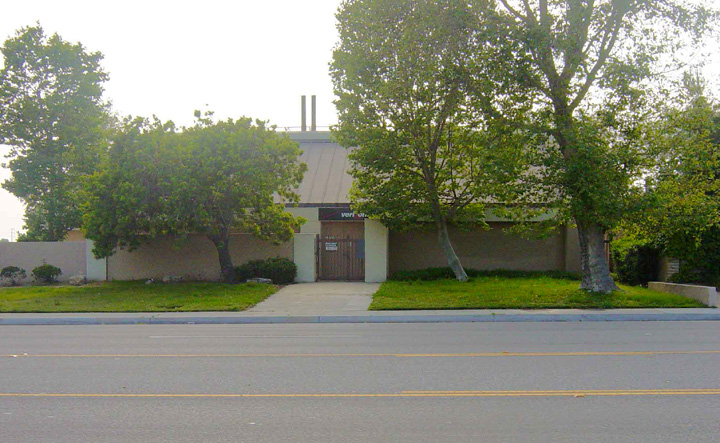 ONTARIO XG "SOUTH" |
Ontario "South" was built by GTE in the 1980s to relieve the Ontario office and extend phone service into the Chino Valley. |
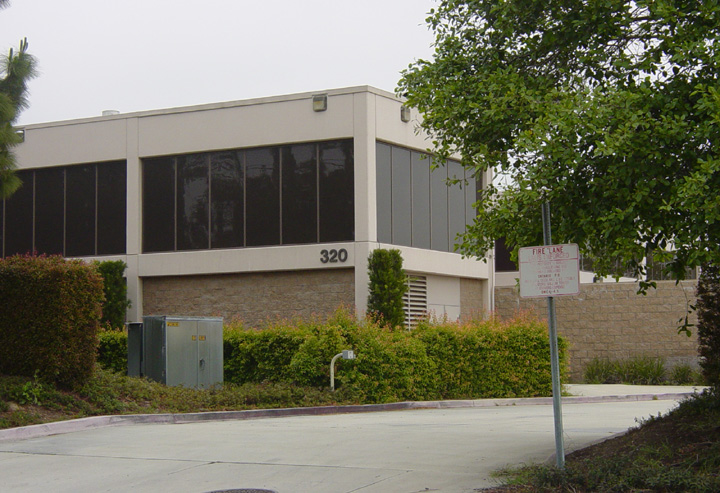 ONTARIO XM "AIRPORT" |
Built in the late 1980s by GTE to relieve Ontario Main and serve the growing industrial developments around the airport. Now a Verizon office. |
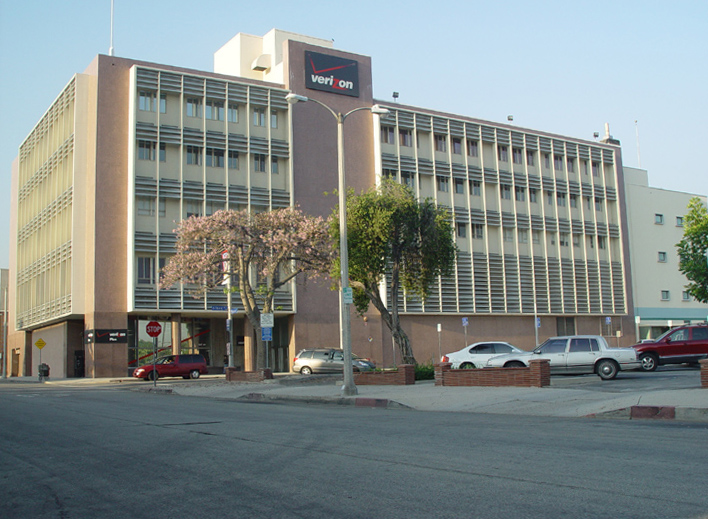 POMONA |
Built by Associated Telephone during the 1930s, became dial
in the 1950s. Pomona became a Toll Center (Class 4) office as part of the
Direct Distance Dialing hierarchy with direct trunk groups to the San
Bernardino Regional Center. Pomona was considered a Foreign Sector
office due to its ownership as an Independent (General Telephone). Both the Ontario and Etiwanda offices homed on the Pomona Toll Office until
1978 when Ontario took over the Toll Functions of that area. Old Exchanges: LYcoming 2, 9 and NAtional 2, 3 and 9 |
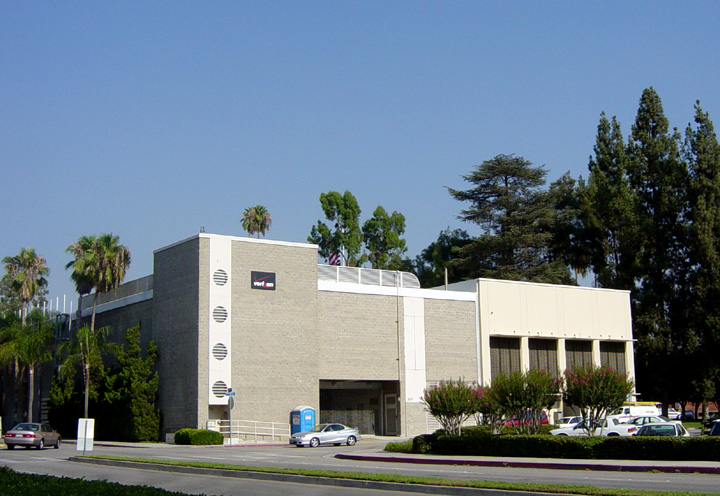 REDLANDS |
Original
office built in the 1920s. Expanded by GTE in the 1990s. Was
once considered a Toll Center (Class 4) office as part of the Direct
Distance Dialing hierarchy with direct trunk groups to the San Bernardino
Regional Center. Redlands was considered a Foreign Sector office due
to its ownership as an Independent (General Telephone). The Banning
office was a tributary of the Redlands Toll Office. Old Exchanges: PYramid 2 and PYramid 3 |
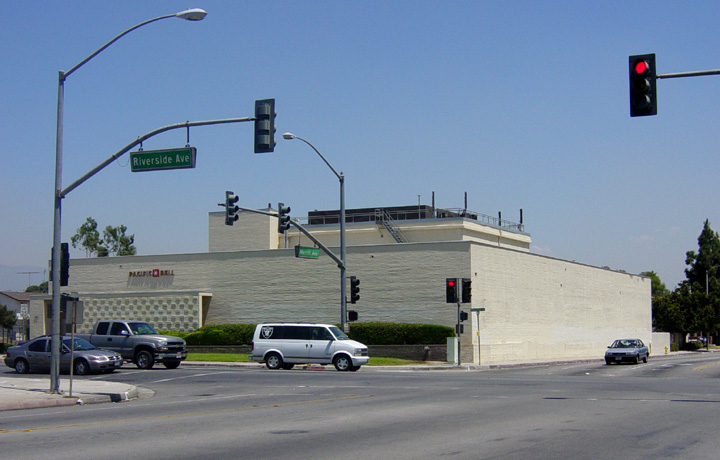 RIALTO |
Original Pacific Telephone & Telegraph Office. |
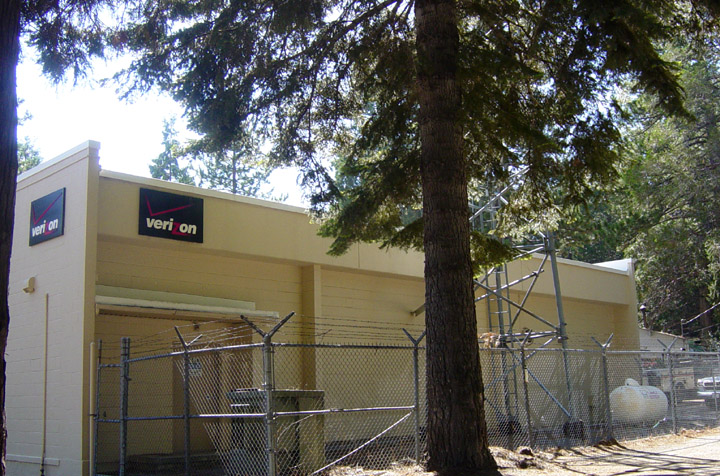 RUNNING SPRINGS |
Running Springs was one of the first central
offices along Highway 18 to provide telephone service to the mountainous area.
Old Exchanges: UNion 7 |
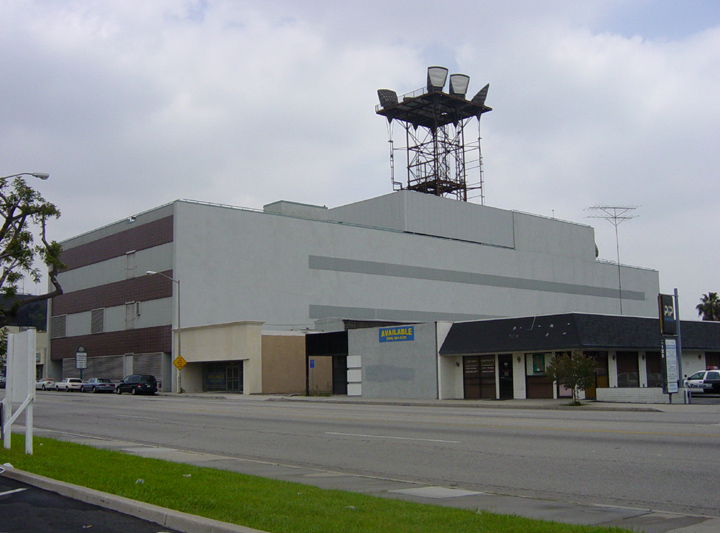 SAN BERNARDINO REGIONAL "CLASS 1" TOLL OFFICE |
 AT&T's San Bernardino Regional Toll office was one of ten "Class 1" Regional Toll Centers in the United States as part of the Direct Distance Dialing Hierarchy. See more here: |
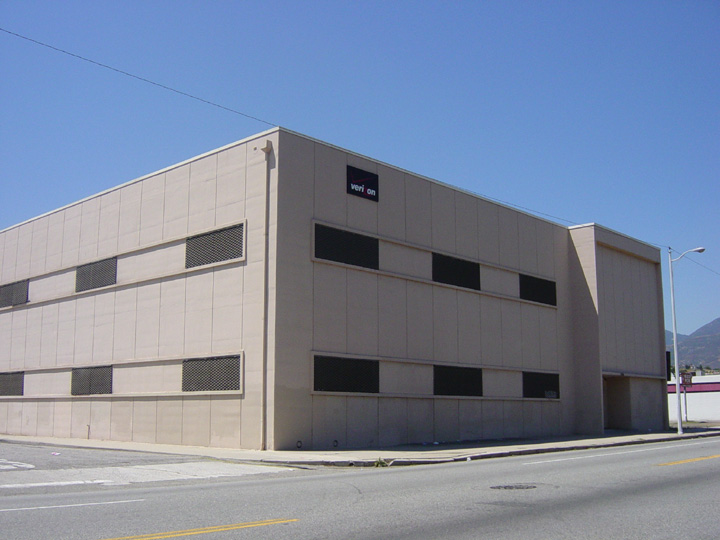 SAN BERNARDINO XH "MARSHALL" |
Old Exchanges: TUrner 2, TUrner 3 and TUrner 6 |
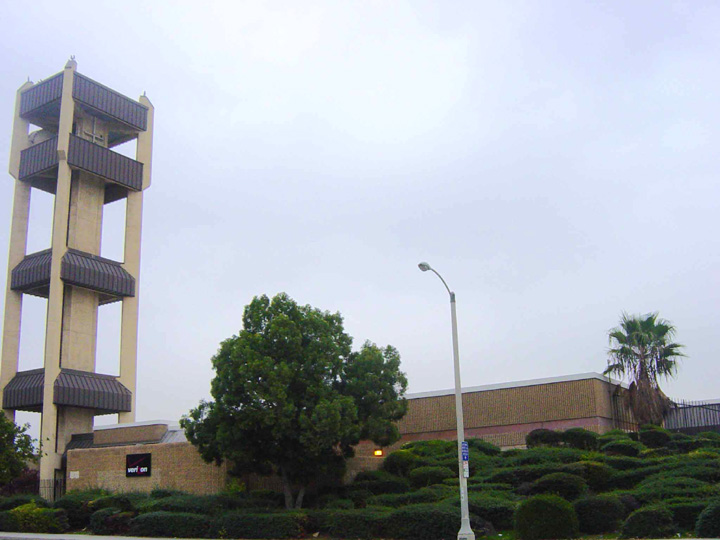 SAN BERNARDIO XK "MAIN" |
Original General Telephone Office. Has microwave links to the various offices in the San Bernardino Mountain resort areas, hence stylized tower. Old Exchanges: TUxedo 5, TUxedo 8, and TUrner 4 |
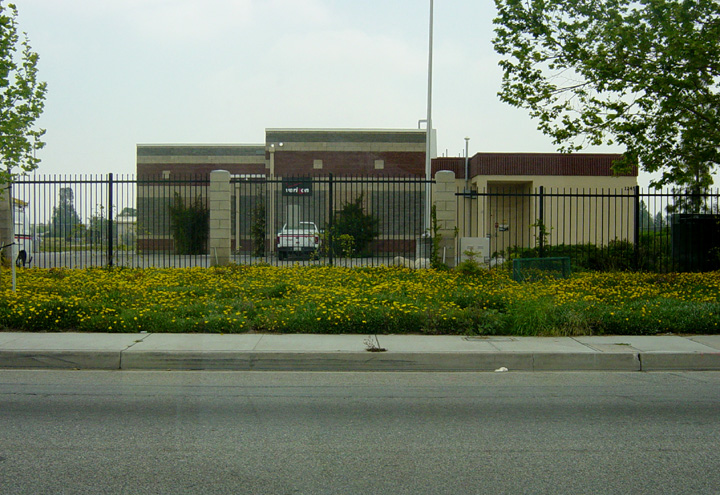 SAN BERNARDINO XL "WATERMAN" |
Originally built by General Telephone in the early 1990s as a remote switch, to relieve San Bernardino Main and Loma Linda. |
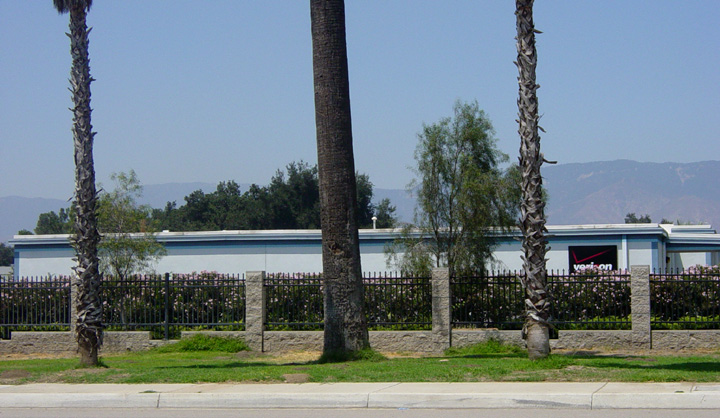 SAN BERNARDINO XN "NORTON" |
Norton was originally constructed to be a dedicated central office to the Norton Air Force Base during the 1950s. This office played a crucial role during the cold war and provided normal and secured communications for the military. When the base was decommissioned in the early 1990s, GTE continued operation of the office to relive San Bernardino Main with growth to the east and to serve the new San Bernardino International Airport and Commerce Center. |
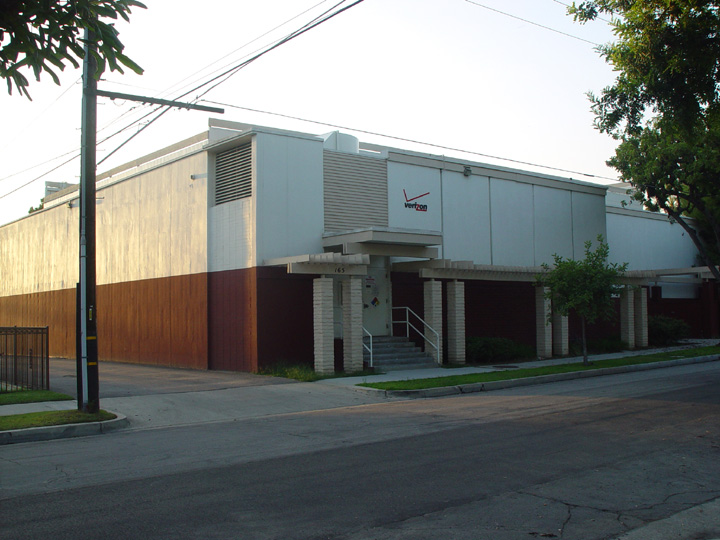 SAN DIMAS |
Built by Associated Telephone in the 1940s, became
dial in
the 1950s. Old Exchanges: LYcoming 7 and 9 |
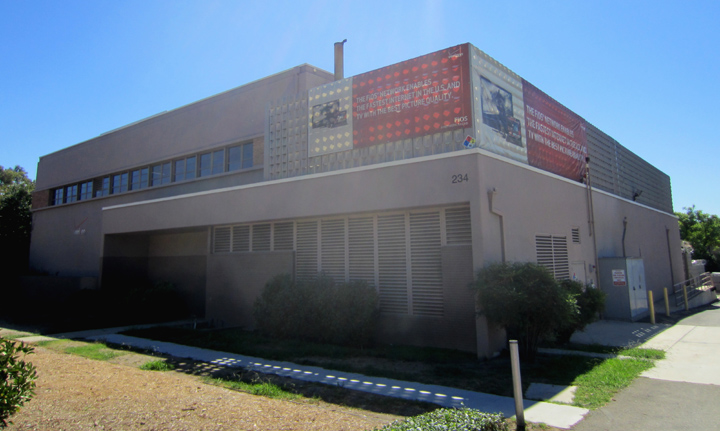 UPLAND |
Serves Upland, San Antonio Heights and
Mount Baldy. Old Exchanges: YUkon 2 and YUkon 3 |
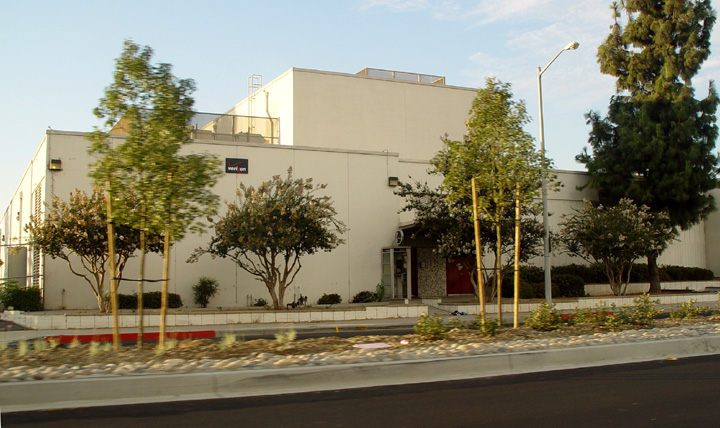 WALNUT |
Built by General Telephone in the early 1960s to relieve
Pomona. Serves the extreme western end of the 909 area code boundary
and is part of LATA 730 (Los Angeles) Old Exchanges: LYcoming 5 |
|
YUCIAPA |
Old Exchanges: PYramid 7 |
Return to: Telephone Central Offices